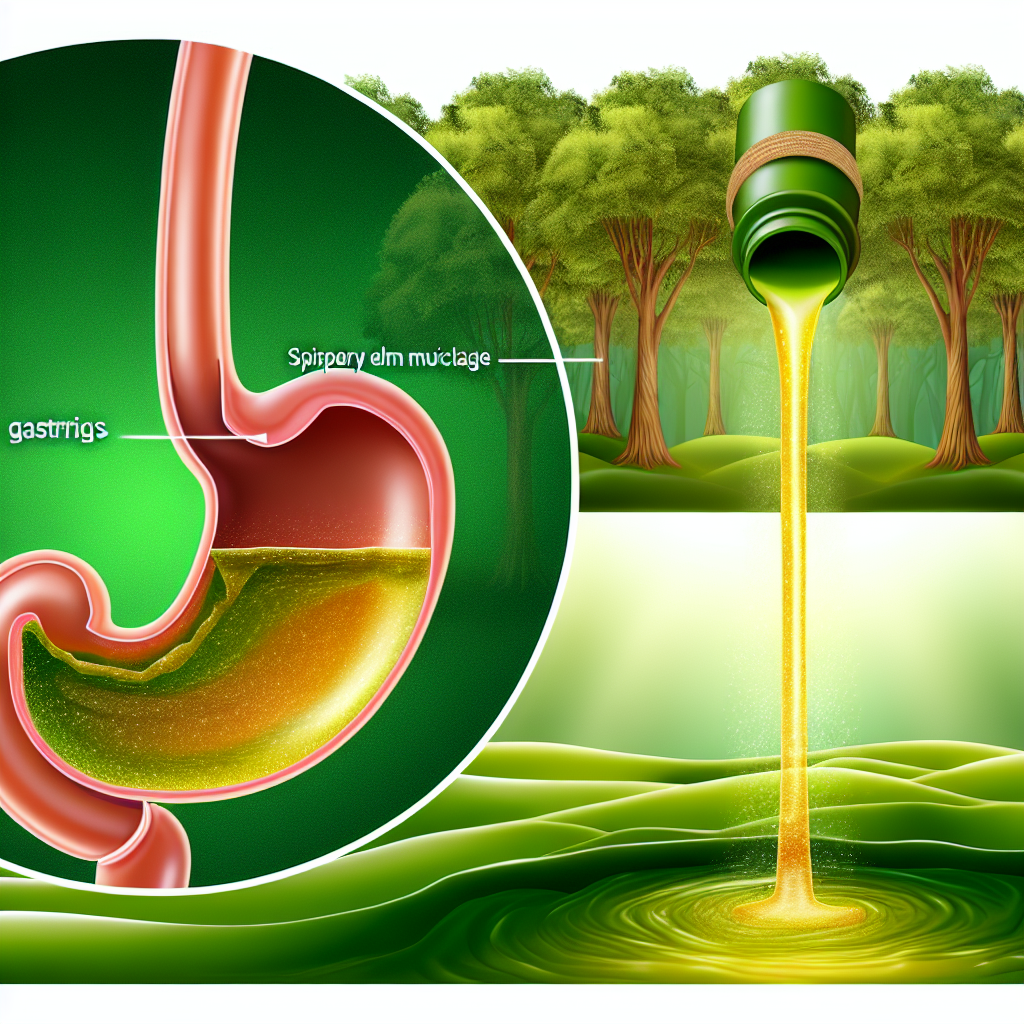Slippery Elm for Gastritis: Soothing Mucilage Therapy
Understanding Gastritis and the Search for Natural Relief
Gastritis is a condition that affects millions worldwide, marked by the inflammation of the stomach lining. It can be acute or chronic and is commonly triggered by factors such as stress, poor dietary habits, long-term use of nonsteroidal anti-inflammatory drugs (NSAIDs), infections like Helicobacter pylori (H. pylori), and excessive alcohol consumption. Symptoms include nausea, bloating, indigestion, and a burning pain in the upper abdomen.
Conventional treatments typically revolve around antacids, acid blockers, and antibiotics, which, while effective, may come with undesirable side effects or lead to dependency. This has led many individuals to seek natural remedies that can provide relief without long-term complications.
What is Slippery Elm and Why is It Gaining Popularity?
Among the realm of herbal therapies, slippery elm (Ulmus rubra) has gained attention as a potential natural treatment for gastritis. This tree, native to North America, has been used for centuries in traditional medicine by Native American populations and herbalists for its powerful demulcent properties—meaning it can coat and soothe inflamed tissues.
The inner bark of slippery elm is rich in mucilage, a gel-like substance that becomes slippery when mixed with water. When ingested, this mucilage can form a protective layer on the mucosal lining of the stomach and esophagus, providing a physical barrier against irritation from stomach acid and other harmful agents.
A Multifunctional Approach to Digestive Health
What makes slippery elm particularly interesting in the context of gastritis is its multifaceted approach. Not only is it known to relieve symptoms like pain and reflux, but it may also support the healing of damaged stomach tissues by promoting mucosal regeneration and offering anti-inflammatory effects.
Moreover, its prebiotic fibers are thought to support beneficial gut bacteria, further enhancing gut integrity. As awareness of gut health and the microbiome grows, many people are now turning to remedies like slippery elm not only for symptom relief but also for long-term digestive harmony.
The Science Behind Slippery Elm’s Soothing Power
Slippery elm’s effectiveness for gastrointestinal disorders lies in its composition. The mucilage content—comprised of polysaccharides—forms a viscous gel that acts as a barrier for mucous membranes. When it comes to gastritis, where irritation and erosion of the stomach lining are predominant features, such a coating serves to shield the epithelial cells from further damage while presenting a conducive environment for healing.
Several preclinical studies and anecdotal human trials support slippery elm’s therapeutic potential:
– A review in the journal Alternative Medicine Review (2005) recognized slippery elm bark as a useful treatment for inflammatory bowel conditions and gastric irritations, including gastritis due to its anti-inflammatory compounds such as beta-sitosterol and campestrol.
– In Clinical Nutrition Insights, a formulation including slippery elm, marshmallow root, and deglycyrrhizinated licorice helped patients with IBS by improving mucosal protection and reducing symptoms — findings relevant for gastritis too.
– The Commission E Monographs, a respected authority on herbal medicine, also approve slippery elm for upper digestive tract inflammation.
– A small study in the Natural Medicine Journal (2010) showed improvement in GERD symptoms due to slippery elm supplementation, highlighting its role in soothing reflux often associated with gastritis.
– Research in Frontiers in Microbiology (2016) indicated that mucilaginous herbal fibers like those in slippery elm have prebiotic effects, increasing beneficial gut flora such as Lactobacillus and Bifidobacterium — organisms essential for gut repair and inflammation control.
Altogether, these studies reinforce the idea that slippery elm addresses both symptomatic relief and the underlying inflammation associated with gastritis.
A Natural Ally for Holistic Gastrointestinal Support
Despite the current lack of extensive clinical trials specifically targeting gastritis, slippery elm has a long-standing reputation and clinical echo across various gastrointestinal complaints. With its:
– Rich mucilage for protective coating
– Anti-inflammatory botanical compounds
– Gentle prebiotic effect supporting healthy gut microbes
…slippery elm offers a unique therapeutic package for integrative digestive support. It is generally considered safe for most individuals and can be taken in a variety of forms — including teas, powders, lozenges, and capsules.
However, for those managing chronic conditions or using medications, it’s always wise to consult with a healthcare provider, especially one experienced in botanical medicine, before incorporating new herbal therapies.
Conclusion: Embrace Soothing Support with Slippery Elm
Slippery elm stands out as a time-tested, gentle, yet effective remedy for those suffering from gastritis. With its rich mucilage content, anti-inflammatory properties, and support for a healthy gut microbiome, this herbal ally focuses not only on symptom relief but also on long-term healing of the stomach lining.
Although more modern, large-scale studies are warranted, the cumulative historical use and scientific data support slippery elm’s integration into modern gut health strategies. Whether used alone or in combination with other healing herbs, slippery elm serves as a valuable tool in the journey towards digestive wellness — soothing the gut, naturally.
—
Concise Summary:
Slippery elm is a natural herbal remedy that may be beneficial for managing gastritis, a condition characterized by inflammation of the stomach lining. Slippery elm’s mucilage content can form a protective coating on the stomach and esophageal lining, providing relief from symptoms like pain and reflux. Additionally, slippery elm has anti-inflammatory properties and may support a healthy gut microbiome, contributing to long-term healing of the stomach. While more research is needed, slippery elm shows promise as a gentle, supportive therapy for those seeking natural relief for gastritis.
References:
1. Alternative Medicine Review (2005). “Botanical Treatments of Gastrointestinal Conditions”.
2. Natural Medicine Journal (2010). “Formulation with Slippery Elm for GERD”.
3. Frontiers in Microbiology (2016). “Prebiotic Effects of Mucilaginous Herbs”.
4. United States Pharmacopeia. “Slippery Elm Monograph”.
5. Commission E Monographs. “Ulmus rubra (Slippery Elm)”. Published by Blumenthal, B., 1998.
6. Clinical Nutrition Insights. “Herbal Formulation for Gastrointestinal Health”.

Dominic E. is a passionate filmmaker navigating the exciting intersection of art and science. By day, he delves into the complexities of the human body as a full-time medical writer, meticulously translating intricate medical concepts into accessible and engaging narratives. By night, he explores the boundless realm of cinematic storytelling, crafting narratives that evoke emotion and challenge perspectives.
Film Student and Full-time Medical Writer for ContentVendor.com




